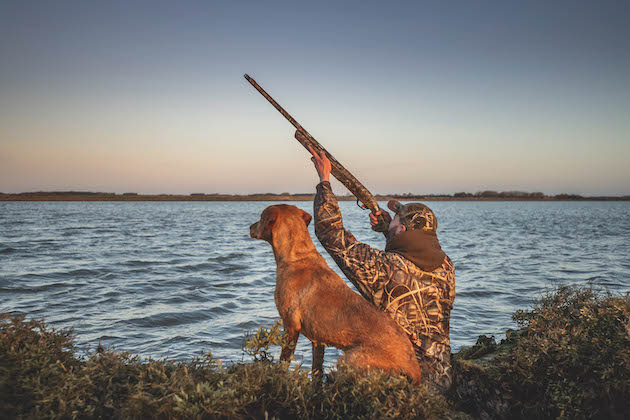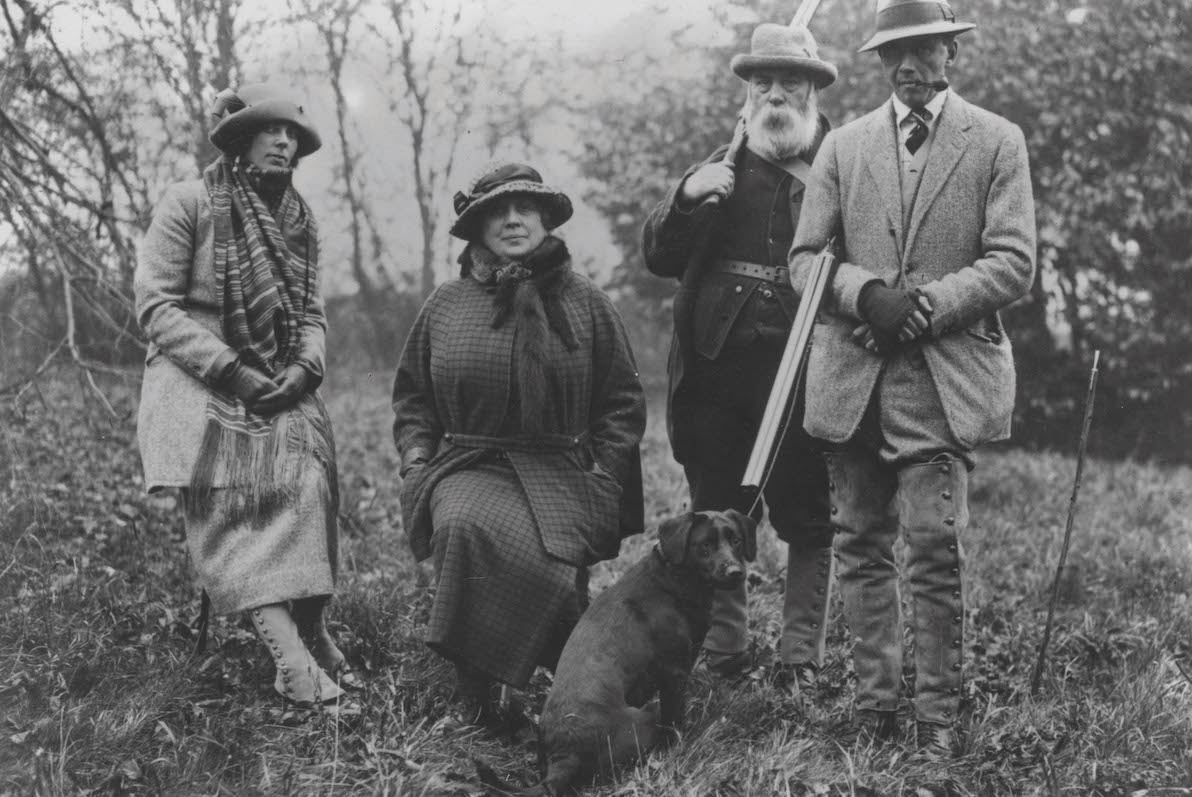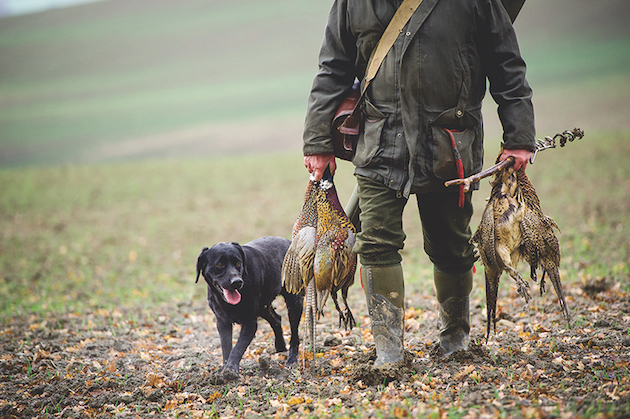The definition of sporting – what does sporting really mean?
It is defined as fairness and generosity, but what do we mean when we apply the word ‘sporting’ to shots taken, asks Will Pocklington for Shooting Times

Does the word 'sporting' have different meaning when applied to the wildfowler, for example, or the stalker, the angler or the falconer?
Definition of sporting
“I’d rather be sporting than just put stuff on the ground,” the end Gun muttered as the horn sounded and his neighbour’s old cocker bumbled over to where the first of her master’s redlegs lay dead. I was on the flank of the beating line, from where I’d watched Mr Mutterer leave anything below 40 yards high and struggle with the rest.
His fellow Gun had taken three partridges as they fizzed over energetically at half the height — all folded neatly and pickable. It got me thinking, what is the definition of sporting… and why do people’s perceptions of the term differ?
Pinning down a definition for all fieldsports without straying into the realms of vagueness is tricky, yet most of us seem able to decide whether or not something is ‘sporting’ in a split second. Or do we?

The Oxford English Dictionary interpretation is simple enough: “Fair and generous in one’s behaviour or treatment of others, especially in a contest.” But what does that mean in the context of shooting and other country pursuits?
I put the question to a few friends and asked them for their definition of sporting. While terms such as ‘fairness’, ‘level playing field’ and ‘hard-earned’ were thrown into the melting pot as expected, so too were factors such as personal skill level, familiarity with a place, weather conditions, the kit we use and the status of the quarry itself.
Might they have been overthinking it? It seems that deciding what is and isn’t sporting is more straightforward for some scenarios — and some people — than it is for others.

A walk-about day means working for every opportunity, surely the epitome of ‘sporting’
You could say that when we stand on a peg, faced with the sudden appearance of a quarry that is being driven towards us, the focus of the word relates mainly to the shot itself. Whereas a sporting situation on the foreshore, is just that: a situation in which many factors — the hostile conditions, the unpredictability, the knowledge required — combine to ensure the odds, really, are stacked in the opposite corner.
Perhaps that’s a little unfair. You might argue that even our pursuit of a sporting experience on a peg begins long before we’re anywhere near one. When booking a day’s driven shooting, we can do our research to establish how the birds have been managed on a shoot prior to the point they are cutting across the gunline. We can choose the time of year — October grouse or January pheasants, anyone?
And haven’t the birds already had more than half a chance to stray over the shoot boundary or evade the beaters’ directive with a glug of guile? What about the kit we use? Does the use of a small-bore or a muzzle-loader make it any ‘fairer’ for the quarry? The same might be asked of iron sights on a rifle or dry flies cast by a split-cane rod.
Do these make our task harder? And when do the lines begin to blur between what is sporting, what is enjoyment, what is tradition and what is ethical? Or are these considerations all in that melting pot, too?

If testing our skills turns into overstretching them, does that mean we are losing respect for our quarry?
Skills and tactics
Circumstances are everything and the ‘S’ word is as nuanced as shooting is multifaceted. What, for example, is the definition of sporting for the airgunner or the deerstalker, the falconer, the fisherman, the wildfowler or the pigeon Shot? I asked a few of them and the general consensus is that to be sporting is to test your skills, ideas, tactics and techniques against the quarry. But isn’t that very subjective and dependent on personal views and experience?
I much prefer stalking roebuck on foot to sitting in a high seat. Why? Because I think it’s more sporting. Walking and stalking, using the wind and sun, finding a suitable animal in the binoculars before plotting a route to get as close as possible… With only a modest number of bucks on the ground where I stalk, I like every encounter to be as challenging and memorable as possible.
Would I feel differently if I had designed, made and placed the high seats in likely spots? Perhaps. Would ‘sporting’ even come into it if I was under a lot of pressure to drastically reduce troublesome numbers? Probably not. After all, being sporting isn’t the same as being respectful. The two tangle with one another, but they are not one and the same thing.
One of the most sporting day’s shooting I’ve enjoyed for a while was a rough walk-about day a few miles from home back in January. Two Guns, a team of keen dogs, 11.5 miles covered on foot and a mixed bag of eight different species — flighted, flushed, bolted and ambushed in bramble, bog and bracken. It wasn’t so much the shooting itself that made it sporting, but the physicality of it, the planning involved, the variety and that we had to work for and earn every opportunity.
Perhaps I’m at risk of confusing ‘sporting’ with ‘enjoyment’. They don’t sit far away from each other.
There’s an interesting relationship between our perception of what sporting means and how things have changed with time. In the mid-16th century, for example, when birds were mostly shot on the ground or on water, the nature of sporting shooting was governed largely by the capability and design of the firearms available.
The origins of driven shooting
Throughout the UK and Europe, driven shooting has become one of the most popular facets of our sport. According to…
Matchlocks
‘High-angle’ shots were impossible, because with the gun tilted upward there was nothing to hold the priming powder in the pan of the early matchlock guns. They were heavy and cumbersome, too. As the tools for the job evolved, however, so did the type of shooting enjoyed. The arrival of the flintlock shotgun made things easier and, according to poet and author Gervase Markham, they were “safe and better for carriage, readier for use and keep the powder dryer”.
Illustrations from books published in the 1600s show men shooting at airborne quarry. Further down the line, rapidity of fire increased with the arrival of percussion ignition, then the hinged breech shotgun and cartridges containing primers, propellants and projectiles.
Today, technology continues to advance as new and innovative products are brought to market. Is our perception of the definition of sporting shifting? Thermal imagers, trail cameras and pigeon magnets are only three examples off the top of my head of kit that supposedly gives us an edge. You might argue Gore-Tex clothing makes life easier as well.

Does fishing dry flies with a split cane rod make it ‘fairer’ for the quarry?
Cheating?
Can any of these be considered ‘cheating’ or ‘unsporting’? Did those before us not think the same about telescopic sights or the ability to fire two shots in short order?
The questions we are trying to answer here breed yet more questions — some of them uncomfortable and avoided because of it. We’ve yet to touch on why we strive to be sporting. Is it always for the sake of the quarry, or sometimes for our own gratification? When testing our skills turns to overstretching them, do we not reach a point where it’s no longer fair on the quarry in another sense? It is far better, in my book, to kill a duck with its wings set over a splash at 25 yards than to take a potshot at an 80-yarder and hope for the best.
Further afield, away from the UK, similar questions arise. Many of us wouldn’t dream of shooting at a healthy deer running at full tilt here, yet on the Continent they have no qualms with donning their high-vis and grassing large game as it bundles by a forest stand. It’s interesting to consider why that is.
Ultimately, if we want to be specific about what the definition of sporting, there’s no one-size-fits-all prescription — that much is clear. The test of pitting ourselves against quarry can take many forms and differs between sports, situations and cultures. What is intriguing is that our own gauges and measuring sticks are very personal to us and relevant to the scenario at hand. There’s an awful lot to ponder.









